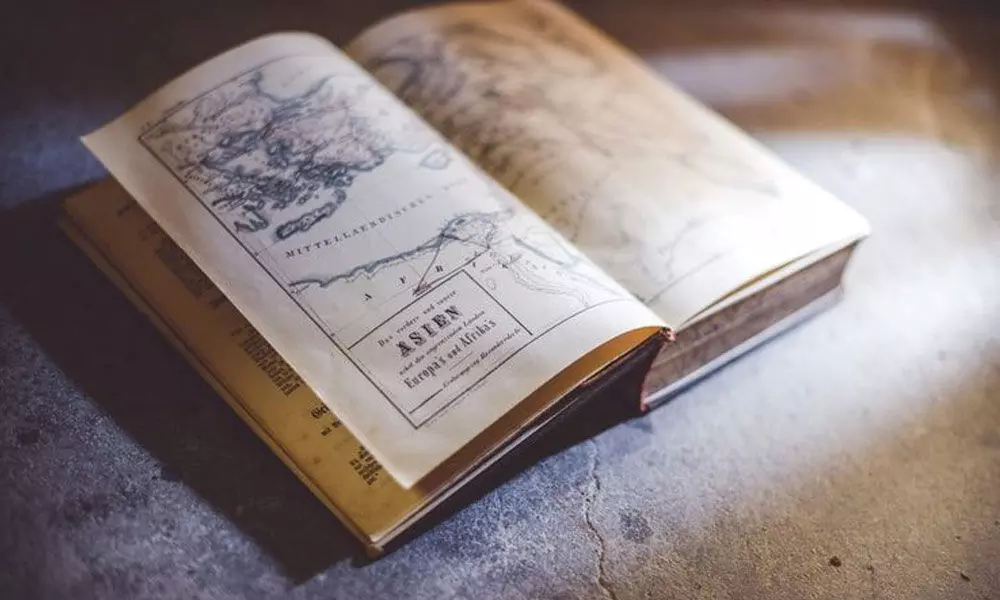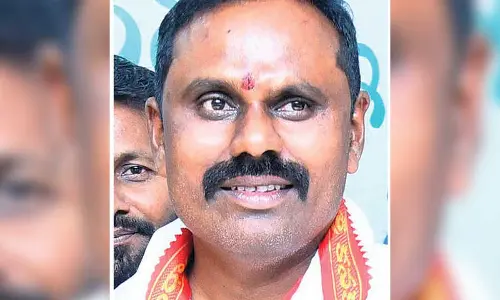Looking back to lineage: Whole world is a single family

Looking back to lineage: Whole world is a single family
In the short history of present humans, each of our tribes, clans, kingdoms, empires and nations have considered themselves to be of superior status
In the short history of present humans, each of our tribes, clans, kingdoms, empires and nations have considered themselves to be of superior status. Some thought they were the children of God, others felt they divinely ordained to rule over everyone else etc. During the eighteenth and the nineteenth centuries, it was conceived by the people that newly created nations they belonged to were superior to all other nations, and that they had existed for time immemorial. None of these beliefs are true. No human community is of exceptional status adaptive to others and none is the child of God. Nations of today are not older than a few centuries and are all interconnected, genetically, culturally and historically.
As we know, where prehistory ends, the period of history begins. History begins when writing begins and places and individuals come alive before us, with their names and recognisable stories. In prehistory, there is no written records and hence we cannot know the names of people and places etc, but to some extent, we can work out about their lives using other kind of evidences. The evidence about prehistory comes from fossils, archaeological excavations of ancient human settlements, various objects made by them like tools and most importantly, the DNA of both ancient and present-day individuals.
Scientists have come to the conclusion that evolution of humans has taken place in Africa. In the recent few years also, Eleanor Scerri of the University of Oxfords, with a group of 23 scientists said there was evidence from across the continent which supported the theory that modern human evolved all over Africa (not in one part East or South), in the Middle Stone Age. They prepared different tools which suggest that human populations were isolated from each other for long time due to geographic features such as deserts and rivers.
As per Indian archaeologists, the first modern humans arrived in India as early as 1,20,000 years ago, but as per population geneticists - study of genetic variation within and between population groups, it is about 65,000 years ago. As per genetics, the first modern human in India means - the first group of modern humans, who left behind lineage that is still around. Whereas as per archaeologists - the first group of modern humans, who left behind archaeological evidence, irrespective of whether or not they have surviving lineage.
The study of population genetics through DNA evidence shows that modern humans of outside Africa are all descendants of single population of 'Out of Africa' migrants who moved into Asia around 70,000 years ago, then spread all over the world. According to genetics, 23 (including one XX in female and one XY in male) chromosomes together with mitochondrial DNA-mtDNA, (every person inherits his or her mtDNA passed on by mother) comprise a person's genome. If we know the mtDNA or Y chromosome of a person, we will be able to locate the person's maternal or paternal lineage over time and can also locate where in the world people who belong to the same group/mutation are currently widely present. In genetics after extensive global studies, we can track record of mutations reflected in mtDNA and Y chromosome and create a genetic family tree i.e. haplogroup - single group.
To make it clear, if two people belong to the same mtDNA haplogroup, means they have a common female ancestor dating the time the haplogroup originated. If two men belong to the same Y chromosome haplogroup, means they have a common male ancestor dating the time haplogroup originated. To cite an example, a person may be entirely of Japan ancestry, but belong to a Y chromosome haplogroup that is common only in India. It would have been necessary to happen that an Indian man to have left behind a son in Japan, could be ten centuries ago and this son has founded a lineage with every generation having at least one son, all of whom lived in Japan and married Japanese women. A male descendant of this lineage today - the son of the son and so on... of the Indian - could still carry the Indian man's Y chromosome, but he would be of Japanese ancestry, though centuries old link that connects him to India.
The geneticists say that migration 'Out of Africa' has taken place about 70,000 years ago. This has been calculated - if we look mtDNA people outside of Africa all around the world, we find that they all descended from a single African woman who originated the L 3 mtDNA haplogroup. Africa has 15 other much older lineages, but none of them were part of the group that populated rest of the world.
L 3 has two immediate descendants' lineages or sub haplogroups M and N - it has still one R. South Asia has all three of these haplogroups. Europe has only two of them N and R. The geneticists have calculated L 3 emerged about 70,000 years ago by using mutation rate and present-day data. Similarly, N lineage 61,000 and M to 48,000 years ago.
The Indians can trace our ancestry back to around 65,000 years ago, when a band of modern humans, homo sapiens first made their way from Africa to the subcontinent. They reached Asia from Africa walking along the coast of Southern Asia and then all the way to Australia. Another group went towards Central Asia and Europe.
The genetic ancestry of these original Indians constitutes 50-60% of our DNA today, irrespective of their caste, language, religion or region. The second major migration occurred from around 12,000 years ago when population related to the farmers of Iran who were in North-western region which mixed with the first migrants, creating agricultural revolution resulted in Harrapan/Indus valley civilization. A third farming related migration from East Asia occurred around 2,000 BCE ago that brought Austro-Asiatic languages such as Khasi and Mandari, in India.
The fourth migration took place between 2,000 to 1,500 BCE soon after collapse of Harrapan civilization. It brought central Asian pastoralists from Khazak Steppe (grassland plains without trees) who spoke Indo-European languages called themselves as Aryans. During this period there was a great mixing among the groups with different migration histories that left no Indian population group untouched.
During 2019, a paper was published in a reputed journal 'Science', comprising 117 scientists as co-authors. The lead author of the paper was Vagheesh Narsimhan of Harvard University Medical School, Kumaraswamy Thangaraj of the Center of Cellular and Molecular Biology, Hyderabad was co-director, along with David Reich of Harvard Medical School. The paper titled 'The Formation of Human Populations in South and Central Asia', highlights, by sequencing 523 ancient humans, that the primary source of ancestry in modern South Asians is a prehistoric genetic gradient between people related to early hunter- gathers of Iran and Southeast Asia.
After the Indus Valley Civilisation's decline, its people mixed with individuals in Southeast (i.e. southeast of north-western India where IVC flourished) to form one of the two main ancestral population of South Asia called Ancestral South Indian (ASI), whose direct descendants live in southern India. Simultaneously, they mixed with descendants of Steppe (characterised by grassland plains without trees in south-eastern Europe) pastoralists who, starting around 4,000 years ago, spread via Central Asia to form the other main ancestral population (or Ancestral North Indians, ANI). The Steppe ancestry in South Asia has the same profile as that in Bronze Age Eastern Europe, tracking a movement of people."
Therefore, through waves of migration and mingling in prehistory, it is splendid how population genetics has confirmed the statement of the Maha Upanishad: "Vasudhaiva Kutumbakam" (The whole world is a family).
(The author is a retired IFS officer based in Hanamkonda, Telangana State)












